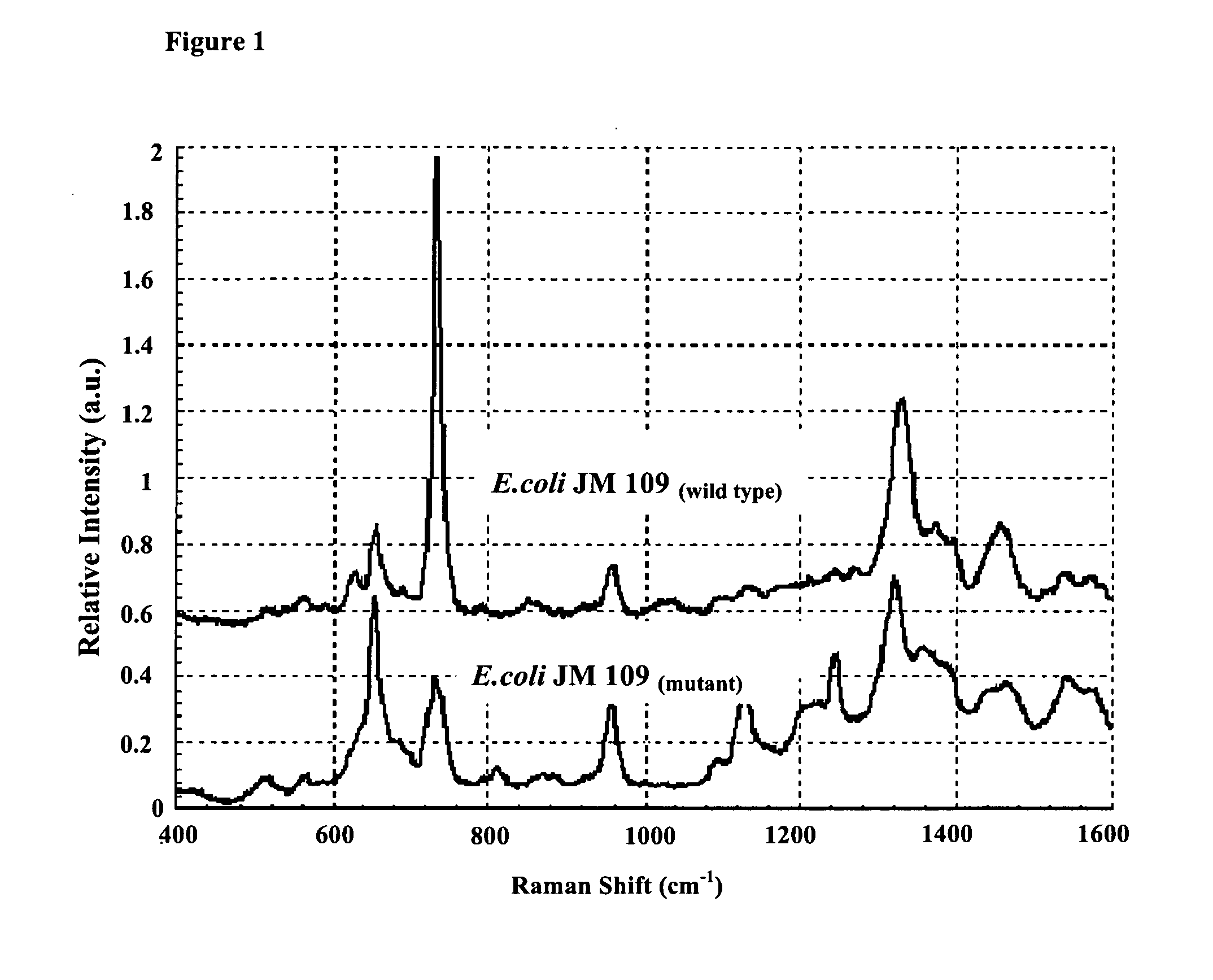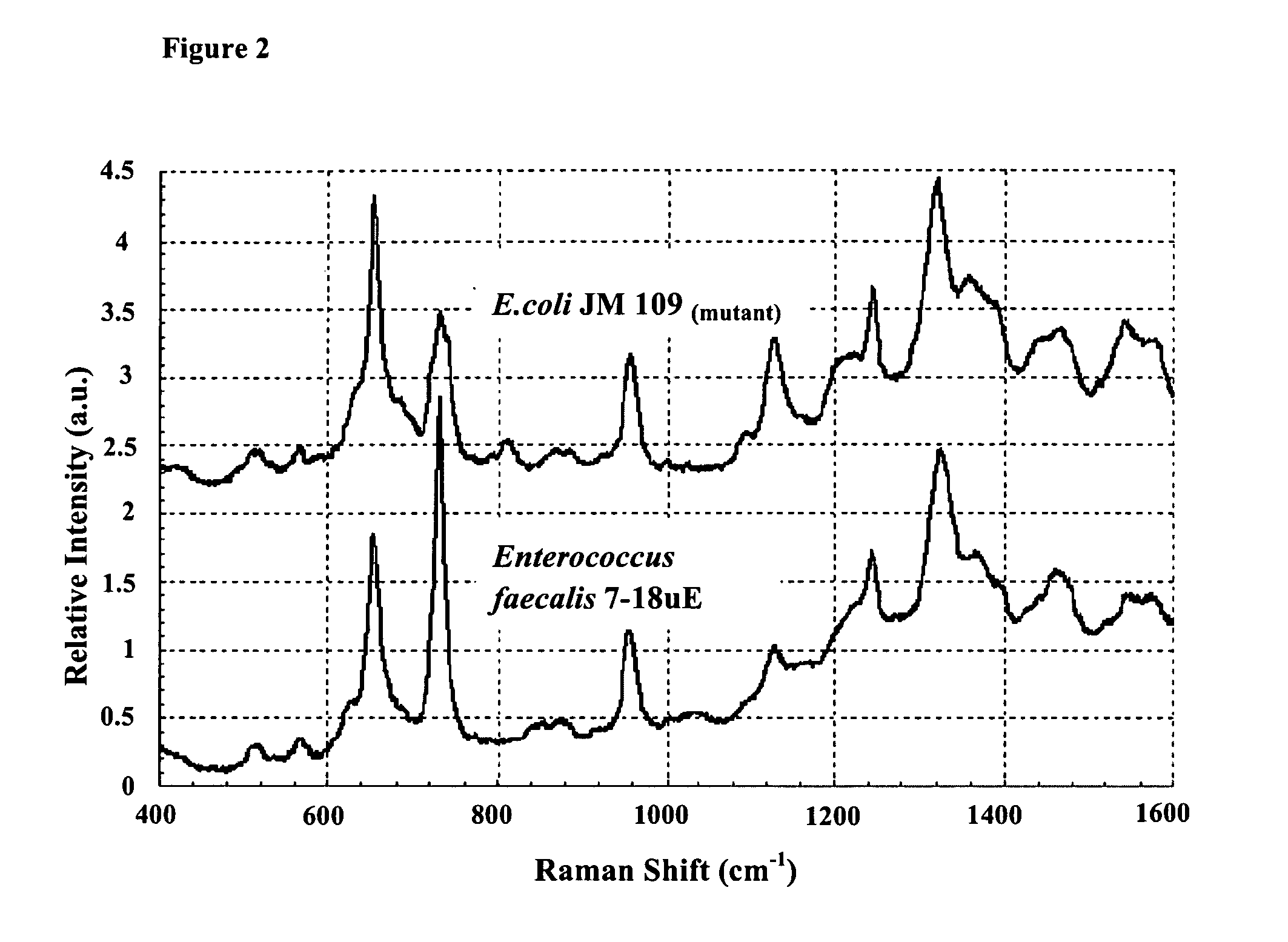Method for identifying microorganism or detecting its morphology alteration using surface enhanced raman scattering (SERS)
a technology of enhanced raman scattering and microorganisms, which is applied in the direction of optical radiation measurement, instruments, spectrometry/spectrophotometry/monochromators, etc., can solve the problems of poor reproducibility and stability of the method utilizing colloid substrate, and the examination methods used so far do not meet the needs in clinical practi
- Summary
- Abstract
- Description
- Claims
- Application Information
AI Technical Summary
Benefits of technology
Problems solved by technology
Method used
Image
Examples
example 1
Materials and Methods
Bacterial Sample and Antibiotics Preparation
[0070]Fourteen laboratory strains, Escherichia coli JM109, Escherichia coli JM109(mutant), Enterococcus faecalis 7-18 uE, Enterococcus faecium 13631, Staphylococcus aureus 13649, Staphylococcus aureus 13615, Streptococcus agalactiae 13640, Enterococcus faecalis 13641 C2, Klebsiella pneumoniae 13641 C1, Proteus mirabilis 13621 C1, Enterobacter cloacae 13457 C2, E. coli 13594 C1, E. coli 13650, Escherichia coli JM109(mutant) and E. coli 13634 were analyzed. Bacteria were grown in 5 mL of LB broth (˜6 h) to OD600=˜0.5, washed five times with PBS, and resuspended in 0.1 ml of PBS. About 3˜5 μl of the bacteria suspension is placed on the Ag / AAO substrate. 0.5% agarose gel was used to mount the bacterial samples for inhibiting the movement of bacteria. Five antibiotics: ampicillin, bacitracin, vancomycin, tetracycline and gentamycin were used in the examples. The former three could interfere with construction of the bacteria...
example 2
Producing Profiles Identifying Different Strains of Bacteria Using SERS
[0075]As showed in FIG. 1, the SERS spectra of the strain Escherichia coli JM109 and Escherichia coli JM109(mutant) were obtained. The spectra of the wild-type strain JM109 and the mutant strain JM109(mutant) were significantly different from each other, demonstrating the strain specificity of SERS on detection and identification of bacterial cells of different strains.
example 3
Producing Profiles Identifying Different Species of Bacteria Using SERS
[0076]As showed in FIG. 2, the SERS spectra of the strain Escherichia coli JM109(mutant) and Enterococcus faecalis 7-18 uE were obtained. The spectra of Escherichia coli JM109(mutant) and Enterococcus faecalis 7-18 uE were apparently different from each other, demonstrating the species specificity of SERS on detection and identification of bacterial cells of different species.
PUM
 Login to View More
Login to View More Abstract
Description
Claims
Application Information
 Login to View More
Login to View More - R&D
- Intellectual Property
- Life Sciences
- Materials
- Tech Scout
- Unparalleled Data Quality
- Higher Quality Content
- 60% Fewer Hallucinations
Browse by: Latest US Patents, China's latest patents, Technical Efficacy Thesaurus, Application Domain, Technology Topic, Popular Technical Reports.
© 2025 PatSnap. All rights reserved.Legal|Privacy policy|Modern Slavery Act Transparency Statement|Sitemap|About US| Contact US: help@patsnap.com



